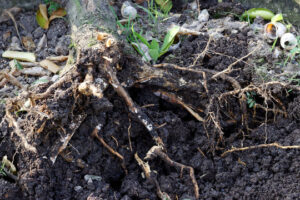The Importance of Soil Amendments for Healthy Crops
The health and productivity of crops start below the surface, in the soil that supports plant growth. Many farmers utilize soil amendments to optimize the structure and nutrient availability in their fields. Two of the most common and beneficial soil amendments are lime and gypsum. Applying these can lead to healthier plants, higher yields, and long-term soil improvement.
Why Soil Health Matters
Plants require good soil structure and essential nutrients to grow properly. Soil supplies physical support, oxygen, and water to plant roots. It also provides nitrogen, phosphorus, potassium, and other elemental nutrients that crops need. If soils are too dense, acidic, or nutrient-deficient, crops will struggle to develop and produce high yields. Using lime and gypsum amendments helps create ideal soil conditions for crop success.
The Benefits of Agricultural Lime
Most plants grow best in slightly acidic to neutral soil, with a pH of 6.0-7.0. However, many soils are naturally acidic or trend more acidic over time as nitrogen fertilizers are applied. Soil acidity reduces nutrient availability and microbial activity. Applying crushed limestone counteracts acidity and sweetens soil. Lime contains calcium carbonate that dissociates into plant-available calcium and carbonate ions. The carbonate neutralizes hydrogen ions that create acidic conditions.
Farmers apply 1-3 tons of lime per acre to increase soil pH to optimum levels for their crops. The effects of liming can last 3-5 years. Liming improves nutrient uptake of nitrogen, phosphorus, potassium, and trace elements. It also increases microbial activity and earthworms that improve soil structure. Healthier plant root systems develop, increasing drought resistance.
Advantages of Gypsum Fertilizer
Gypsum is hydrated calcium sulfate. Unlike lime, gypsum doesn’t change pH. Gypsum provides supplemental calcium and sulfur, both essential plant nutrients. Using gypsum improves soil structure by helping clay particles aggregate. This creates more small pore spaces for air and water movement. Gypsum also replaces sodium ions with calcium on clay particles, improving sodic and compacted soils.
Better water infiltration and drainage with gypsum means fewer ponding issues or crop losses from waterlogging. It also makes it easier for roots to expand deeper and access more nutrients. Less erosion occurs on gypsum-treated soils. Crop plants tend to be healthier and more productive. Gypsum rates range from 500-2000 lbs per acre for regular fertilizing, and up to 2-4 tons per acre for sodic soil reclamation.
Integrating Lime and Gypsum Applications
Applying both lime and gypsum amendments together can bring excellent results. Liming corrects pH issues while gypsum tackles structural and nutrient problems. The combination fine-tunes the soil environment for optimal plant performance. They work synergistically to improve soil aggregation, permeability, and fertility. Farmers often see healthier crops that yield 10-30% more. Investing in soil amendments leads to better farm economics and sustainable land stewardship in the long run.
Conclusion
In summary, the use of lime and gypsum in agricultural soils makes a profound difference in improving nutrient absorption, fostering better soil structure, and enhancing overall plant health — all of which contribute to maximizing the yield potential of crops. It’s important to conduct regular soil analyses to determine the present conditions of the soil and the appropriate quantities of lime and gypsum needed. By making these small efforts to maintain soil health, farmers can ensure that their agricultural operations remain sustainable and productive in the long run



